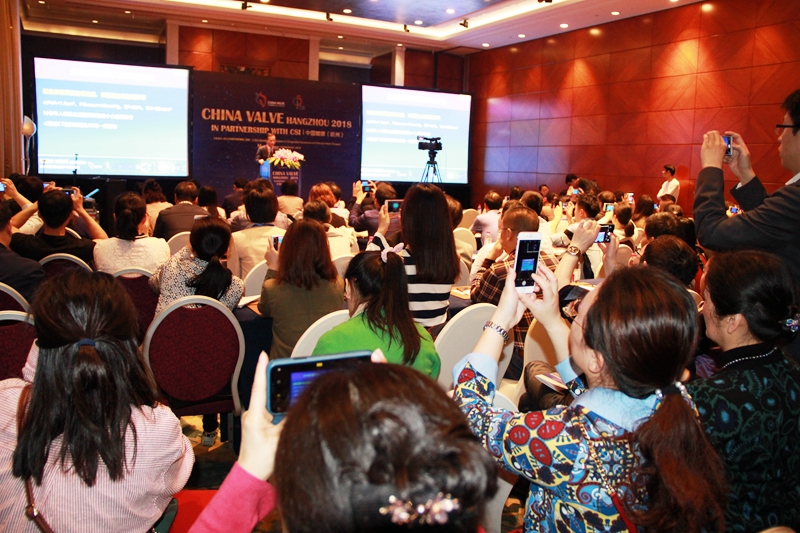
Recently, China Valve Hangzhou held its fourth annual meeting from March 30 to April 1. Jointly host by SAHZU and Catheter Interventions in Congenital, Structural and Valvular Heart Disease (CSI), China Valve Hangzhou 2018 attracted more than 1,000 doctors and researchers from 13 countries, 30 Chinese provinces and 329 hospitals to share information, ideas and techniques. Nearly 20,000 people watched the live streaming of the forum.
As the Executive Chair of the forum and President of SAHZU, Prof. Jian-an WANG gave a remarkable speech about the present situation of TAVR in China. In his speech, he encouraged related parties to develop a guideline for TAVR as quickly in order to promote the procedure’s development in the nation. He expressed his concerns but was very optimistic about the future and gave his best wishes to China Valve.
World renowned experts such as Prof. Horst SIEVERT, Board of Directors of CSI and Executive Chair of China Valve Hangzhou 2018, Prof. Susheel KODALI, Director of the Structural Heart & Valve Center at New York-Presbyterian/ Columbia University Medical Center, Prof. Eberhard GRUBE, Chief of the Department of Cardiology and Angiology at Siegburg Heart Centre, Prof. Junbo GE, Chinese Academician and Director of Institute of Biomedical Sciences Fudan University, all presented their precious ideas in front of audience and shared their experience in the management of heart valve diseases.

The forum also shed some lights on the future trends in interventional therapy for valvular diseases. First, everyone agreed that artificial valve would be smaller and smaller with the development of devices. Transthoracic ECG will ultimately replace transesophageal ECG in TAVR. Minimally invasive or non-invasive valve replacement would be the mainstream instead of open surgical operations. Secondly, TAVR could be widely applied to low to moderate risk patients with severe aortic stenosis. Guideline for TAVR could possibly be modified after results of PARTNER III, UK TAVI, NOTION-2, CoreValve and other clinical trials are released. Third, the application of artificial valve in AR patients awaits more attention and research. Fourth, the price of artificial valve needs to be brought down in order to benefit more patients. Last, Chinese doctors’ experience with bicuspid aortic valve could be a unique feature in interventional cardiology in China as 50% of TAVR patients in China also have bicuspid aortic valve, which requires Chinese cardiologists to contribute more in this field. During the 3 day forum this year, multiple forms of workshops were organized focusing on ECG evaluation for TAVR patients, CT analysis and simulation education of valves. Live and recorded procedures were demonstrated at the forum to teach TAVR step by step. Other forms of education about surgical techniques and case management experience were fully presented as well.

Considered as the cradle of heart valve interventional procedures, the forum creates a platform for all attendees to communicate and identify possible collaboration by inviting top rank interventional cardiologists to share their thoughts and experience and by providing systematic training opportunities to newly started TAVR institutes home and abroad.

Due to the forum’s efforts, interventional cardiology has seen its rapid growth in China over past 4 years. China Valve Hangzhou has gradually earned its reputation in the country and the world.
Author: | Reviewer: | Editor: | Source: | Date:2018-04-17 | Views:![]()